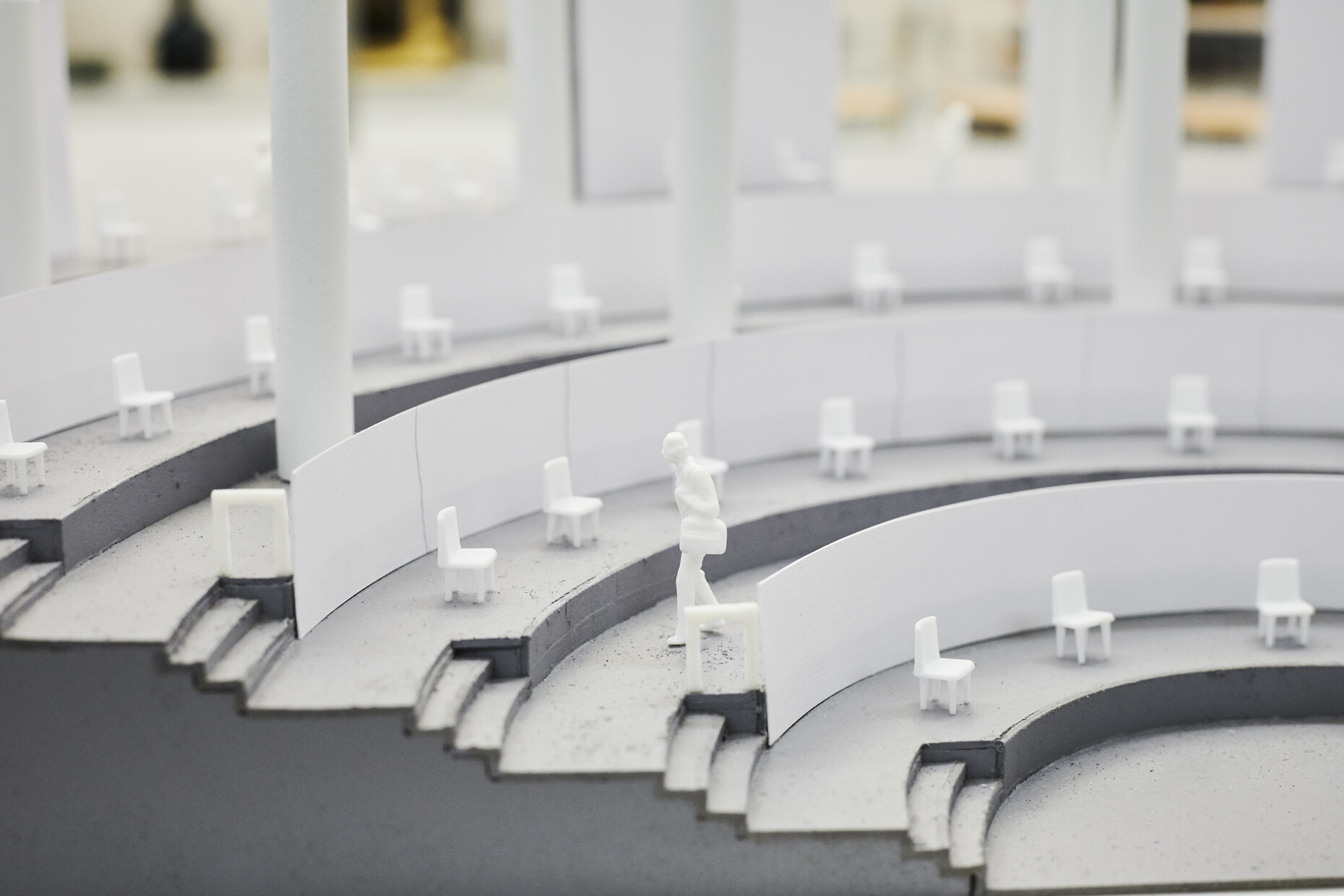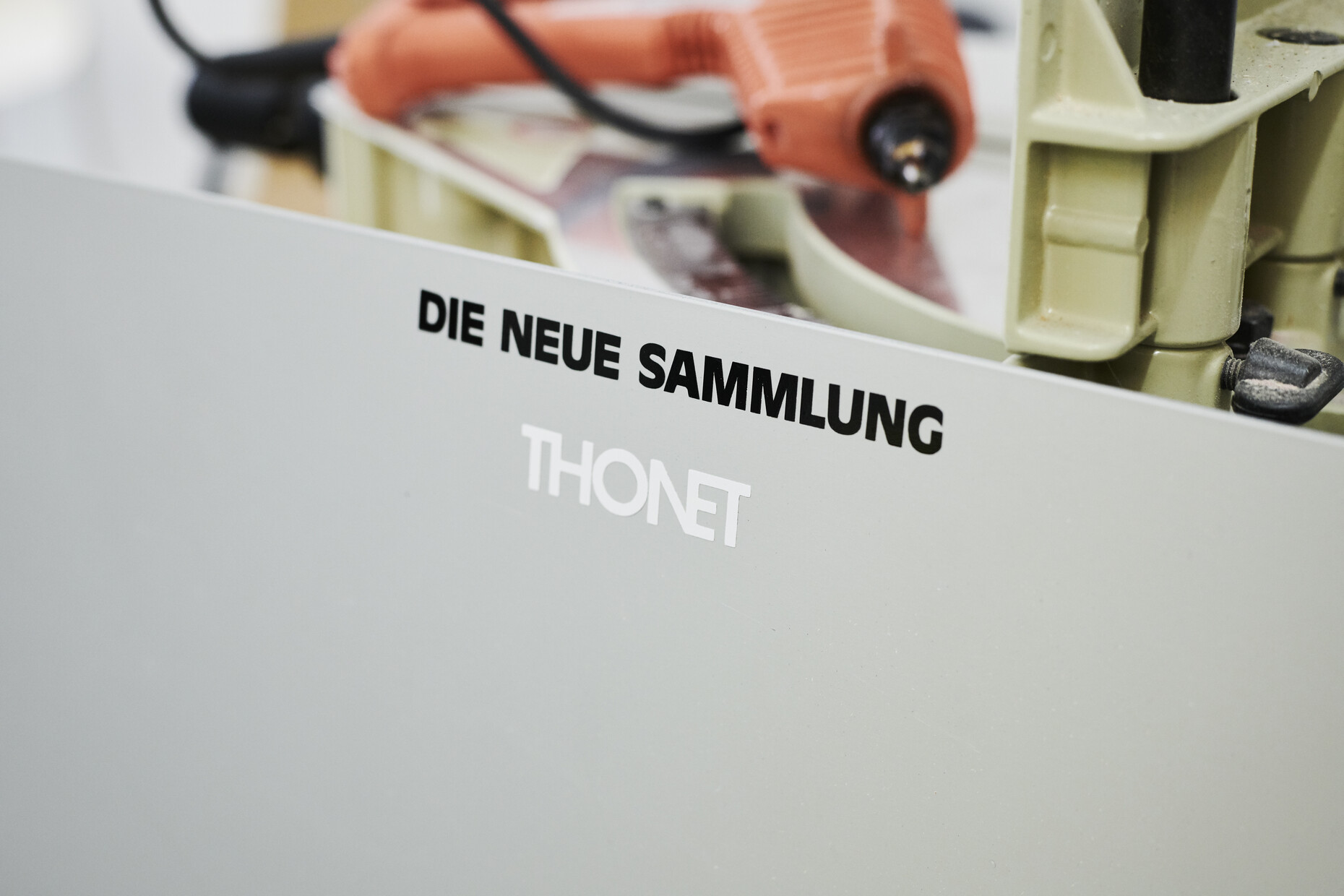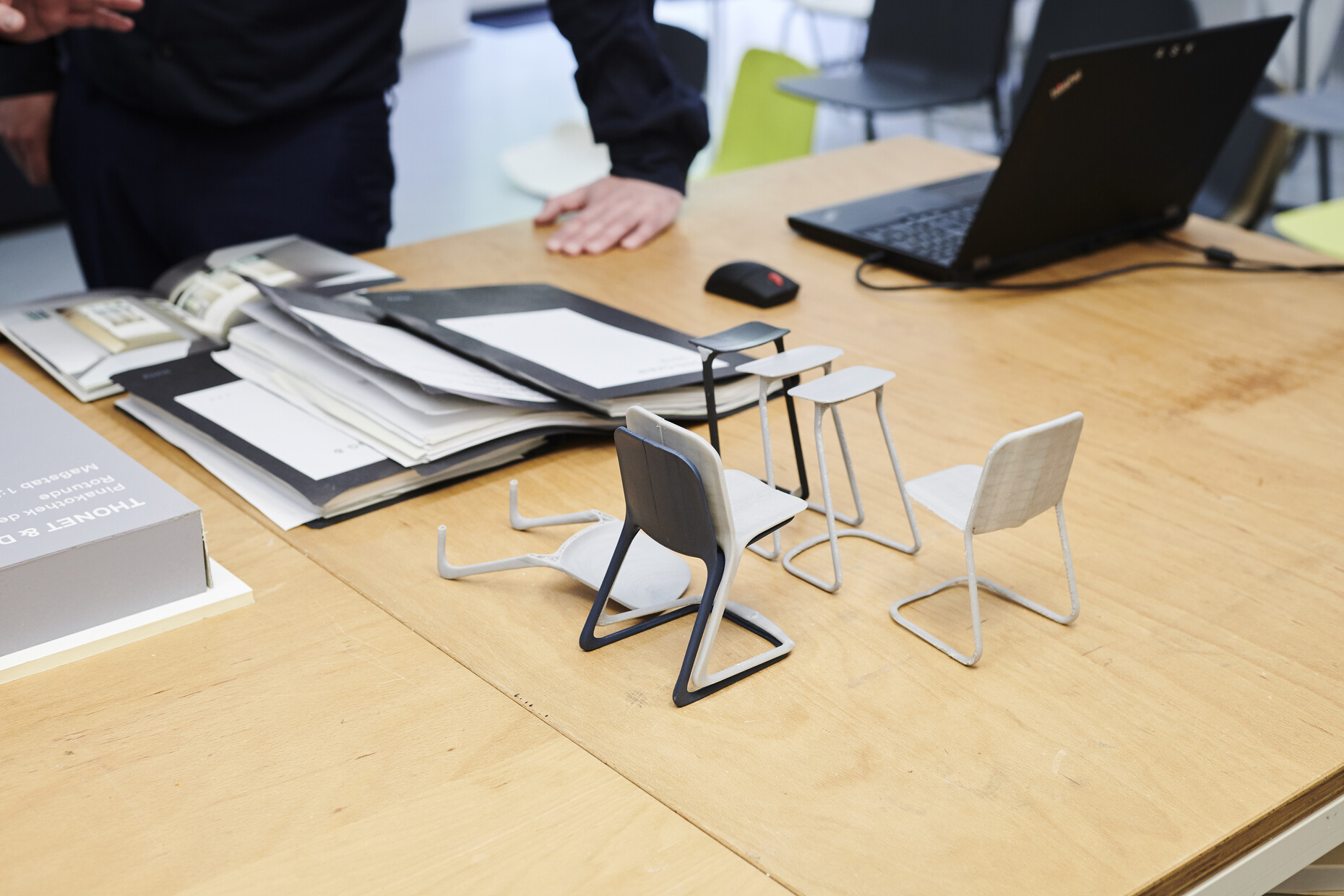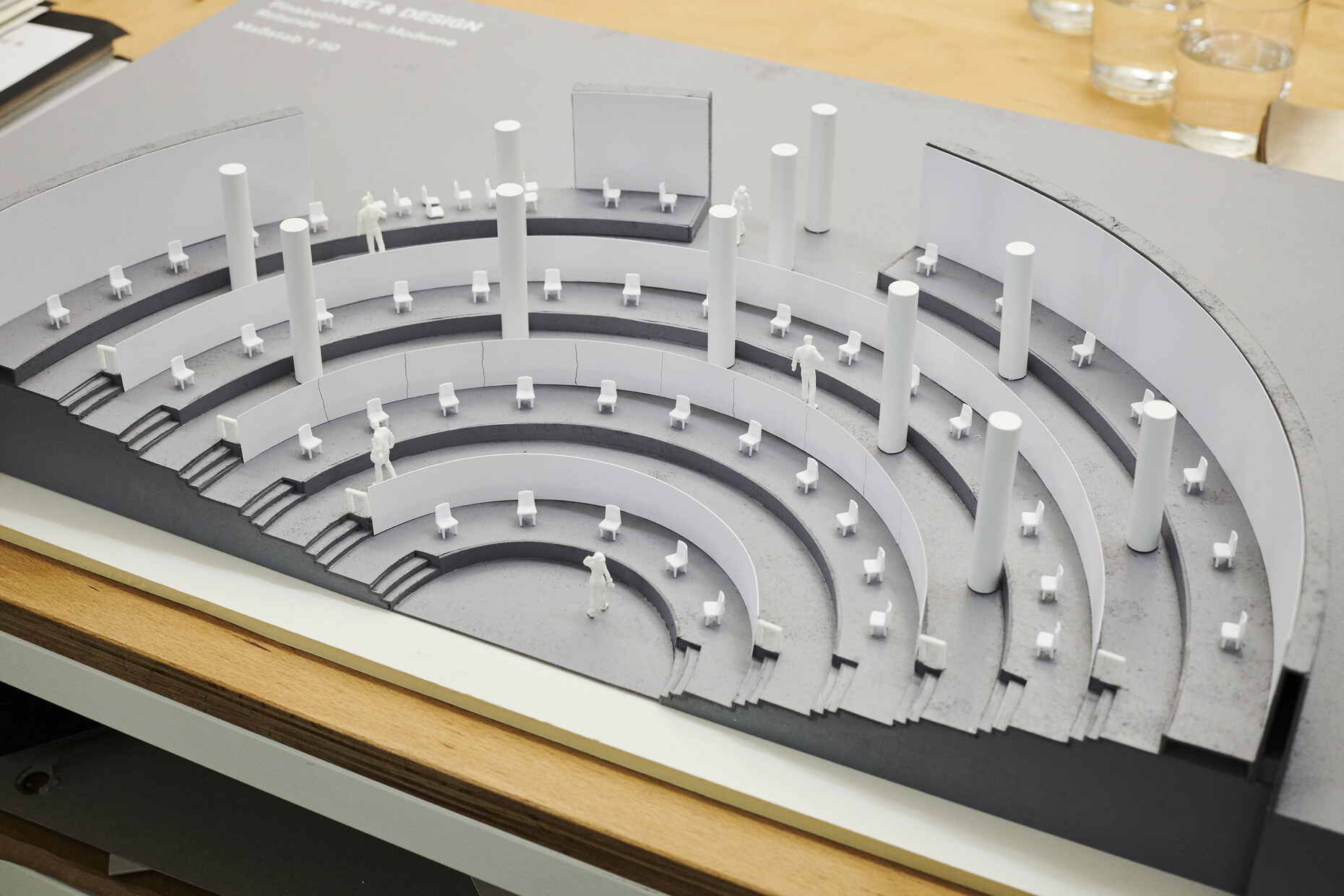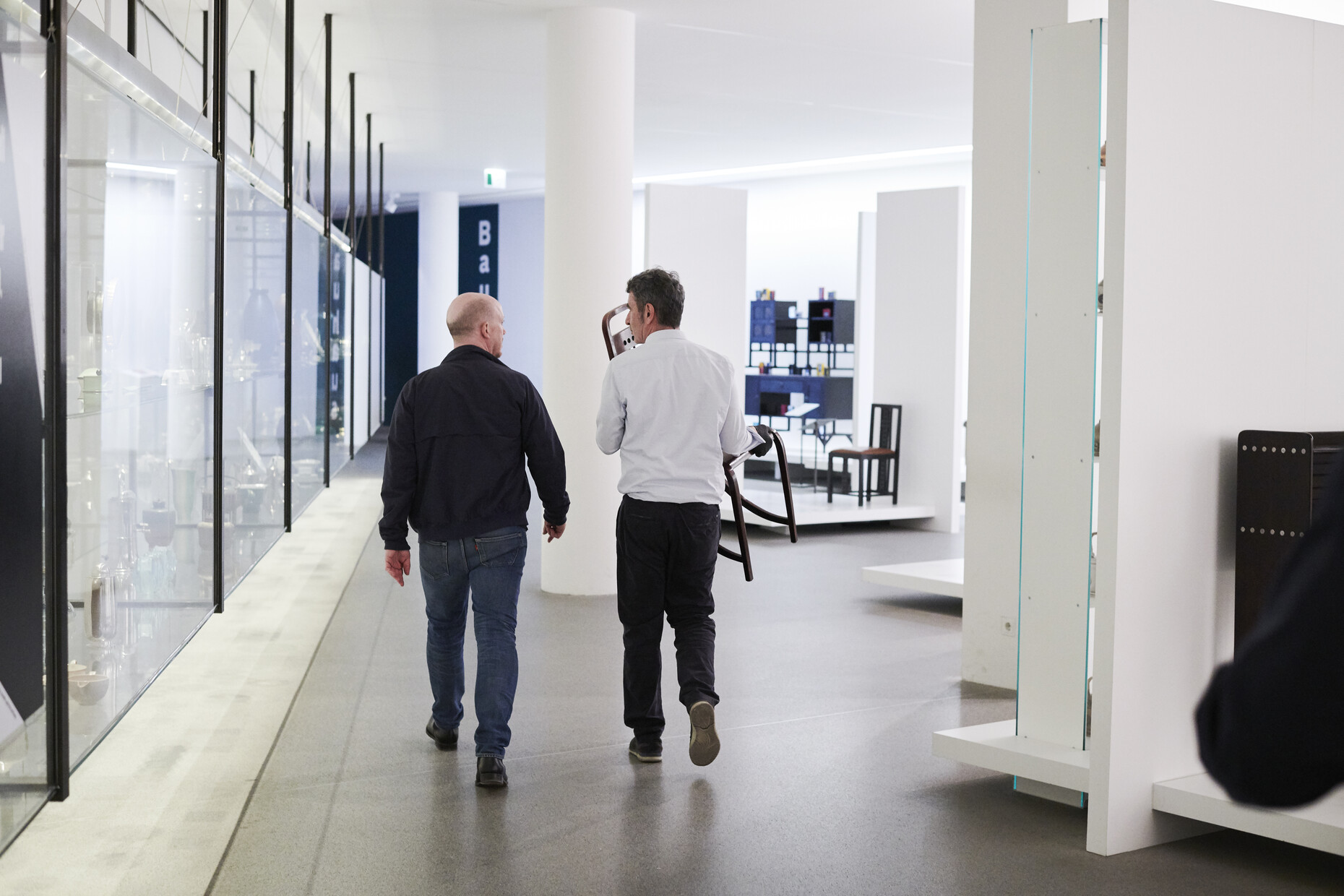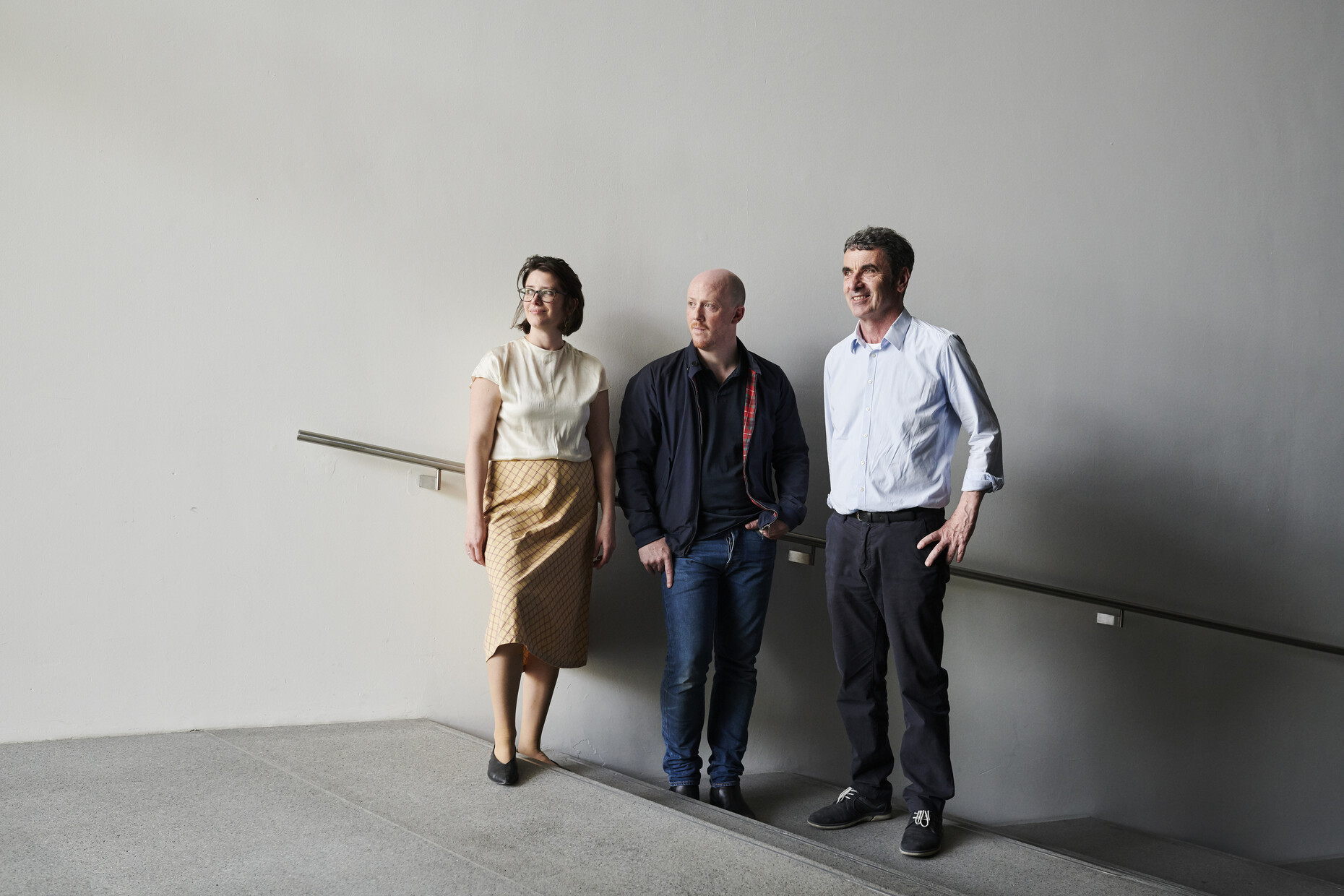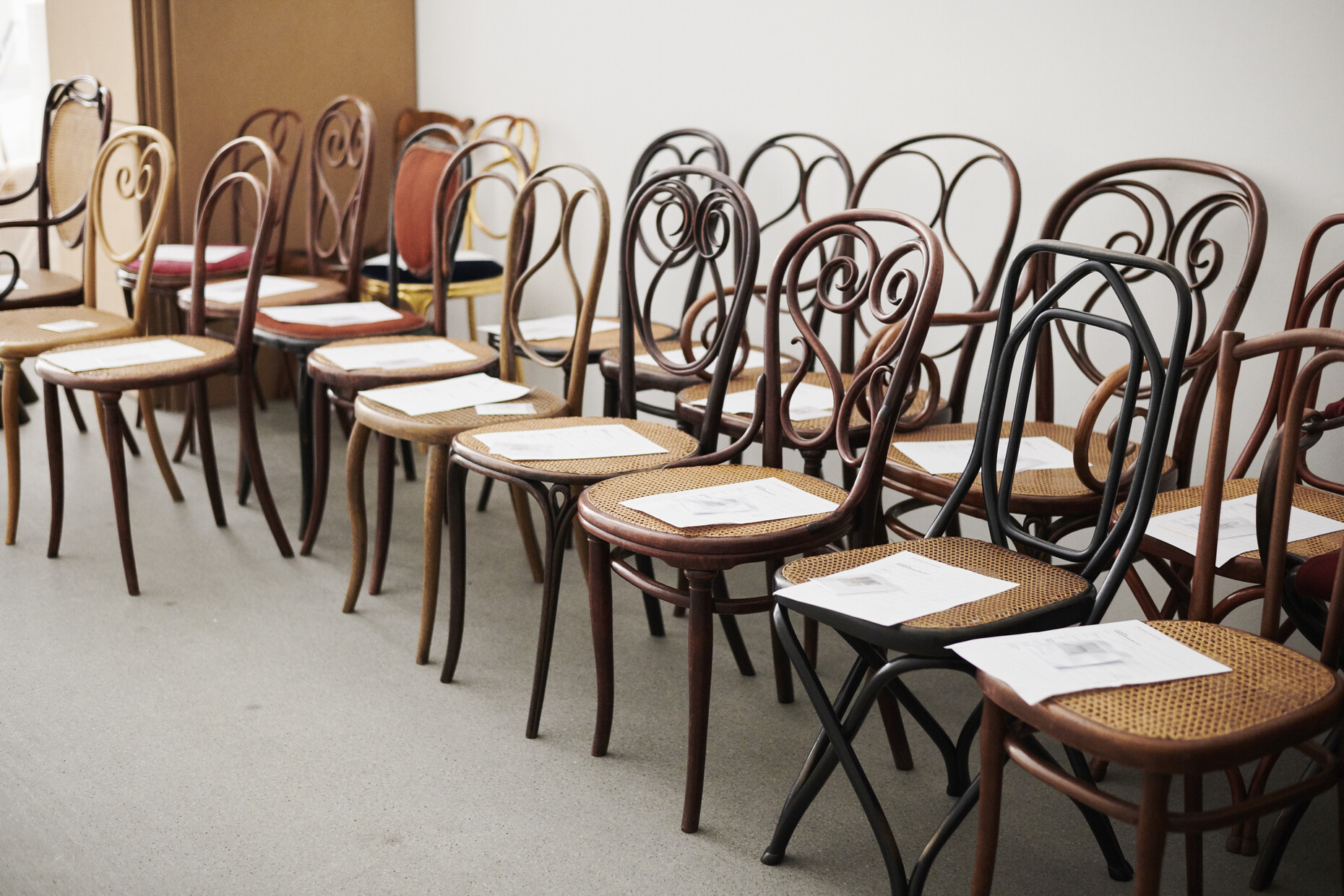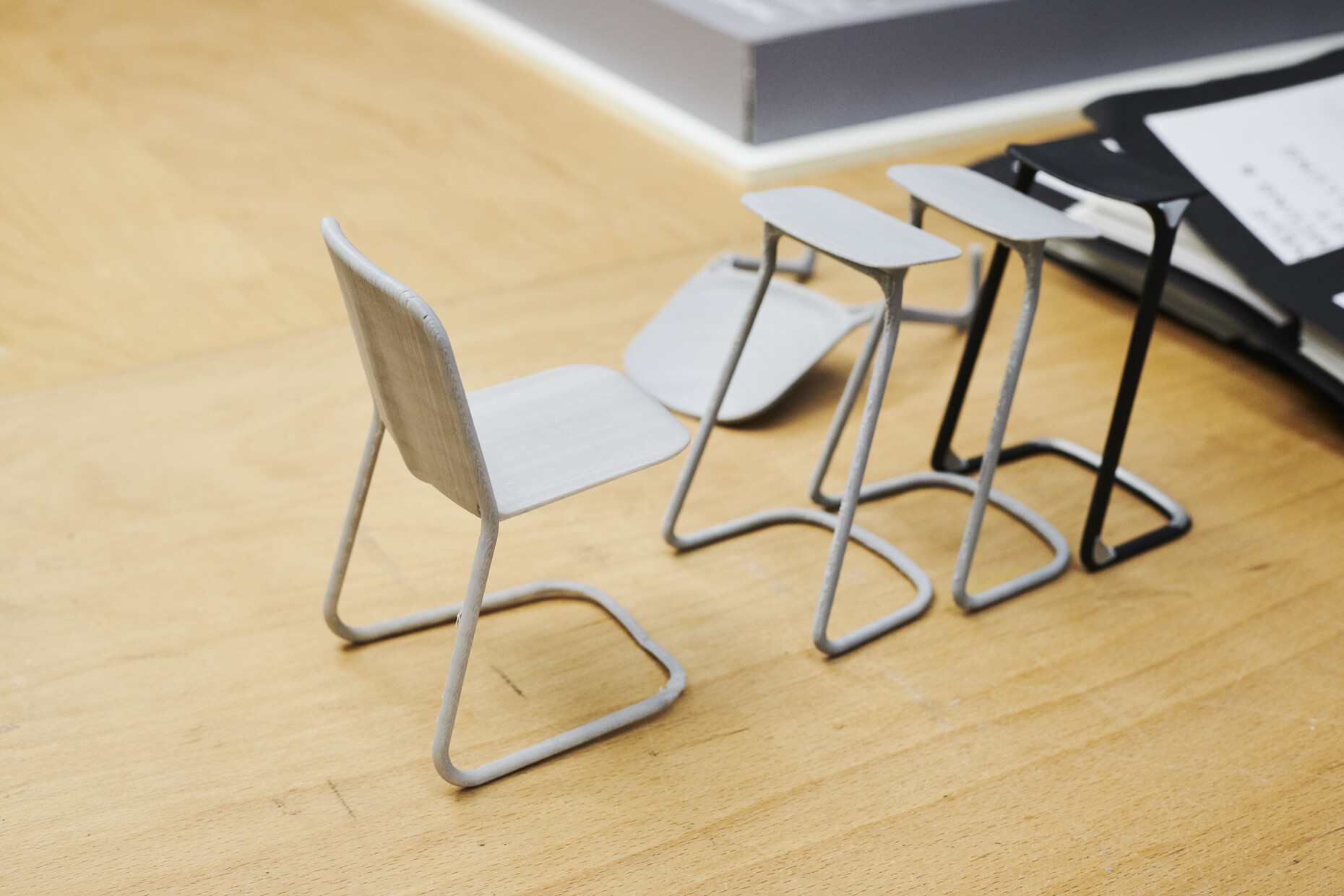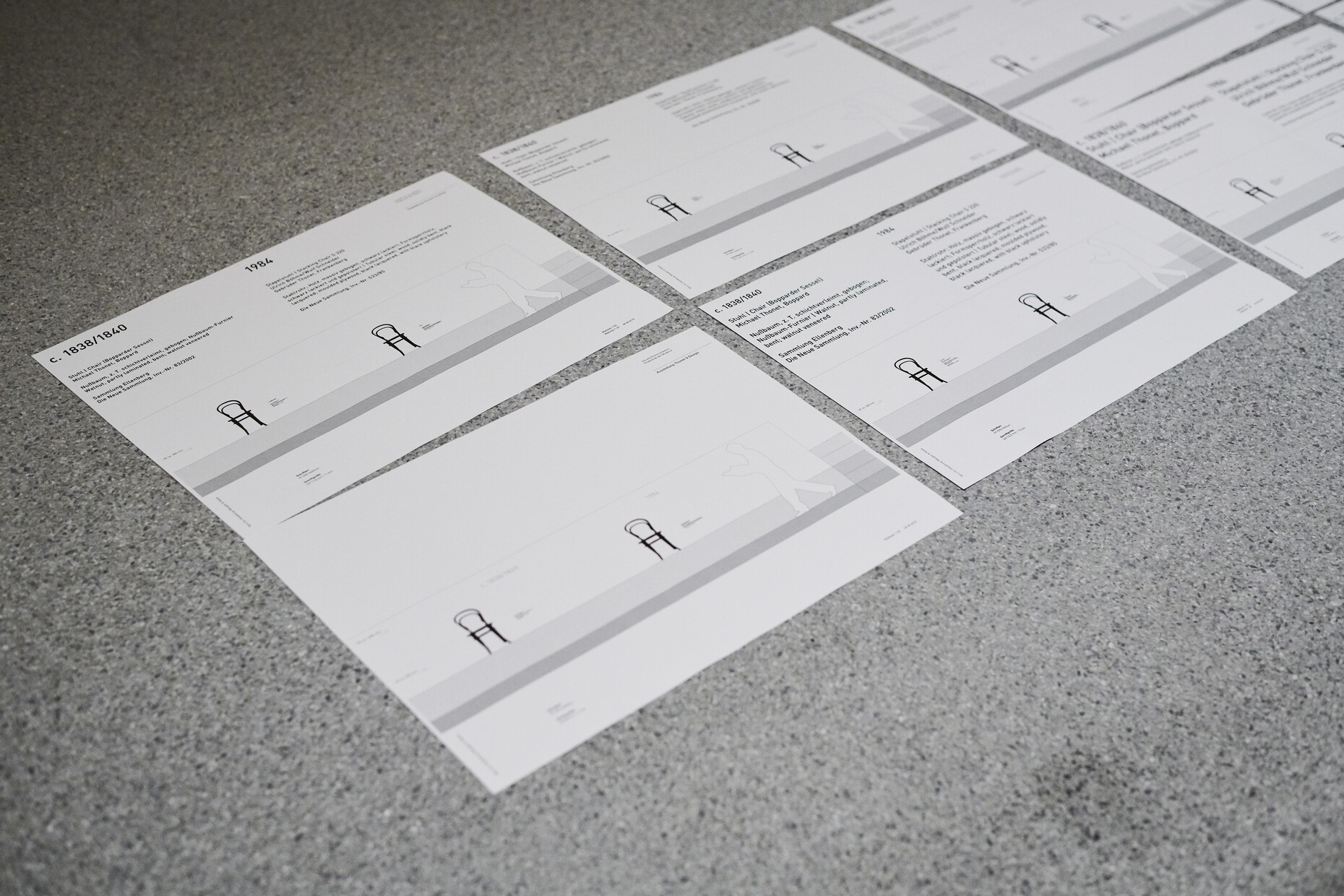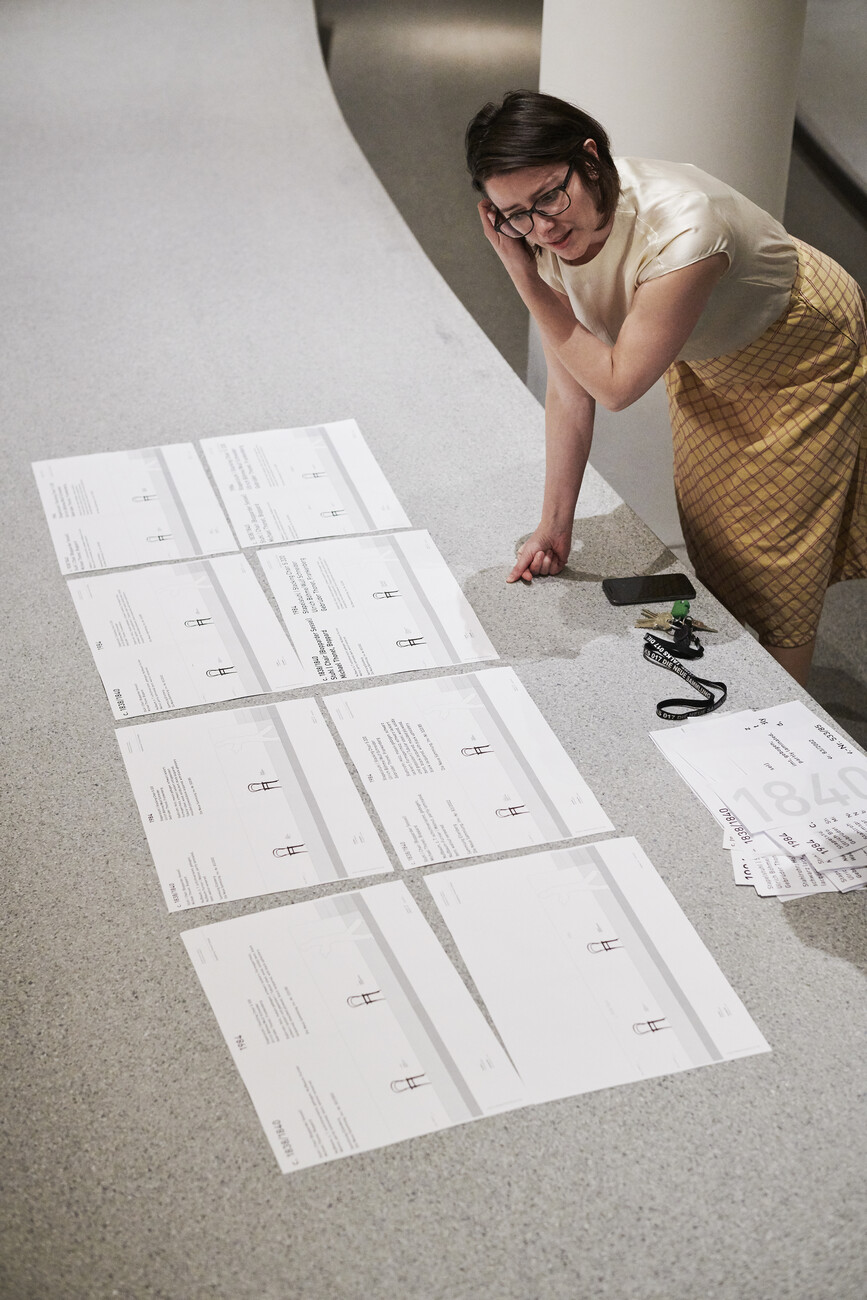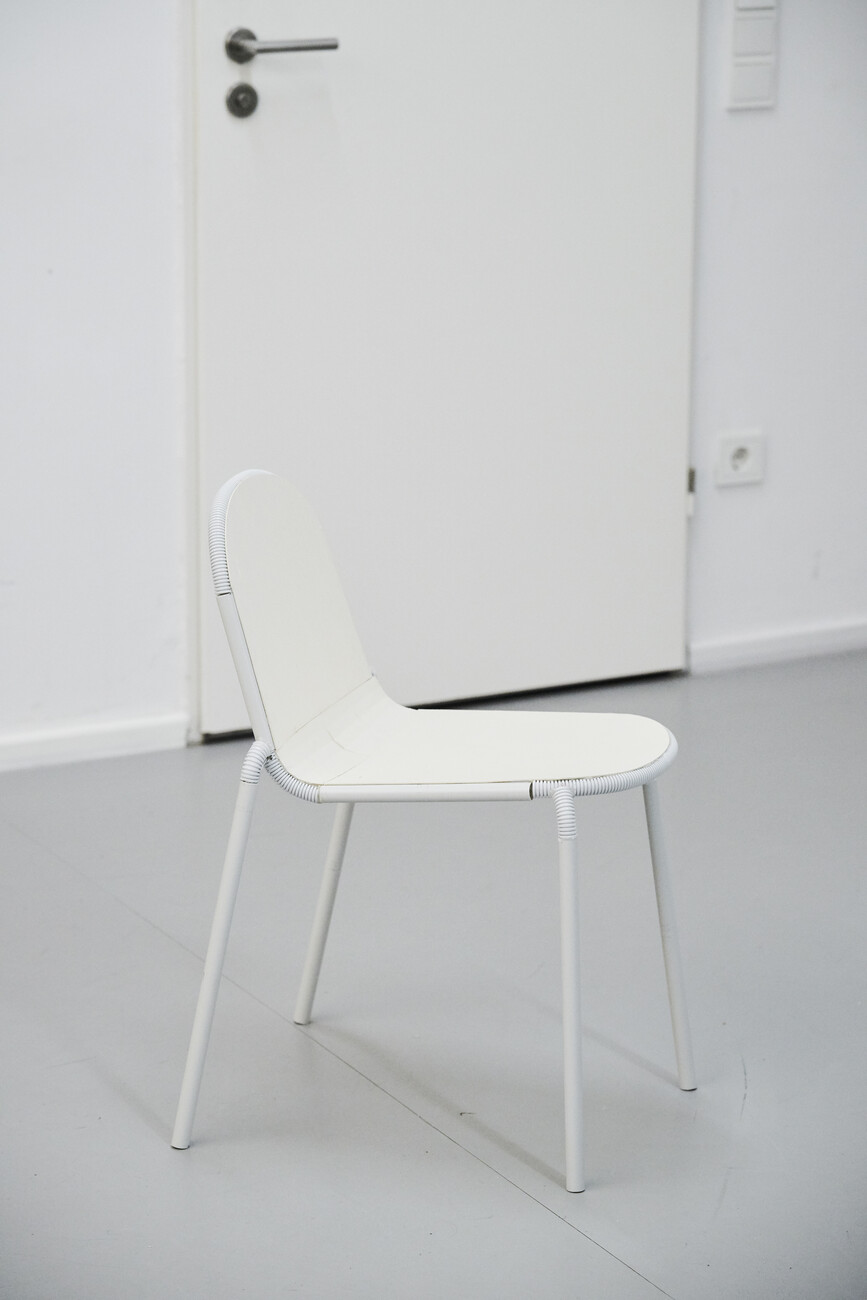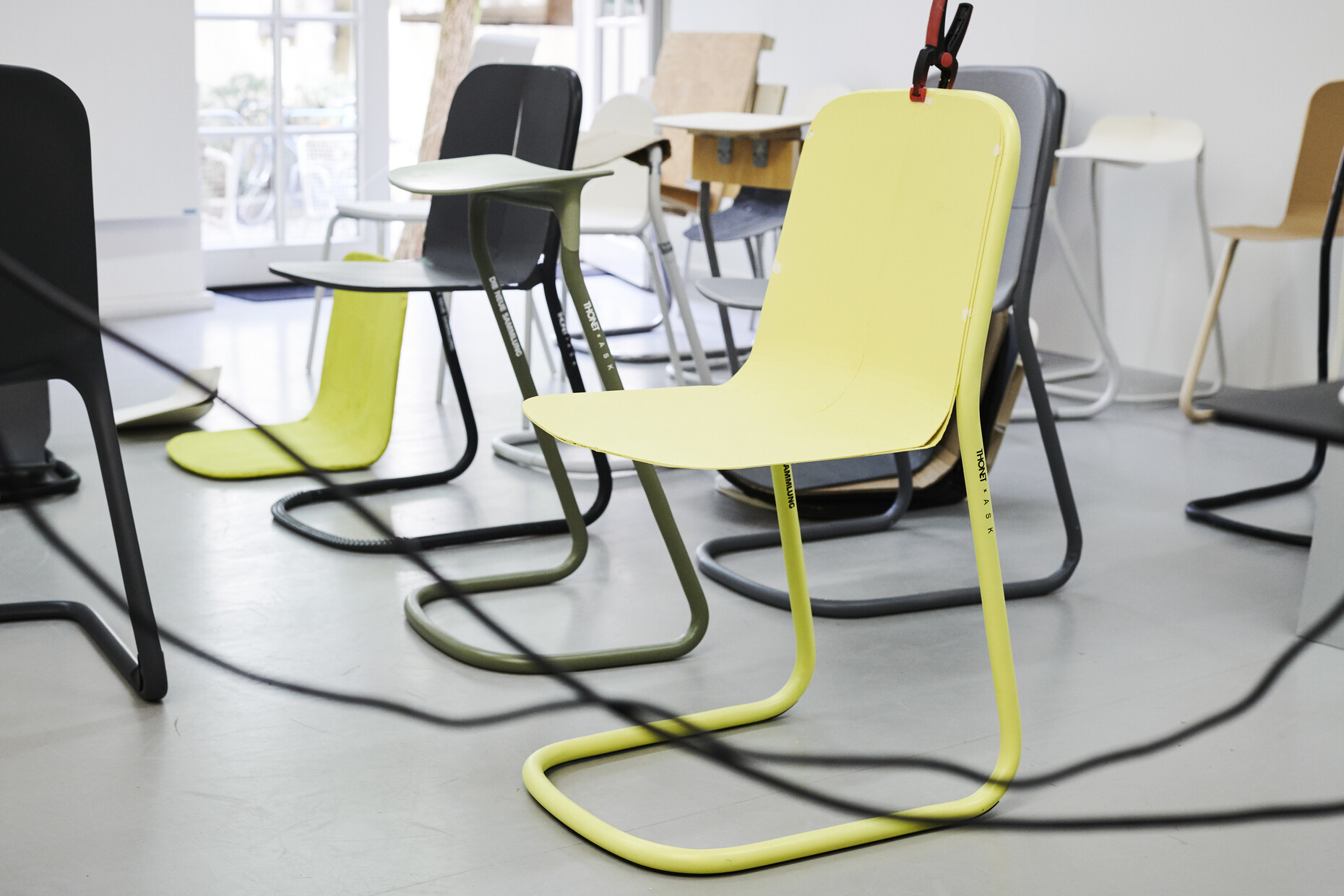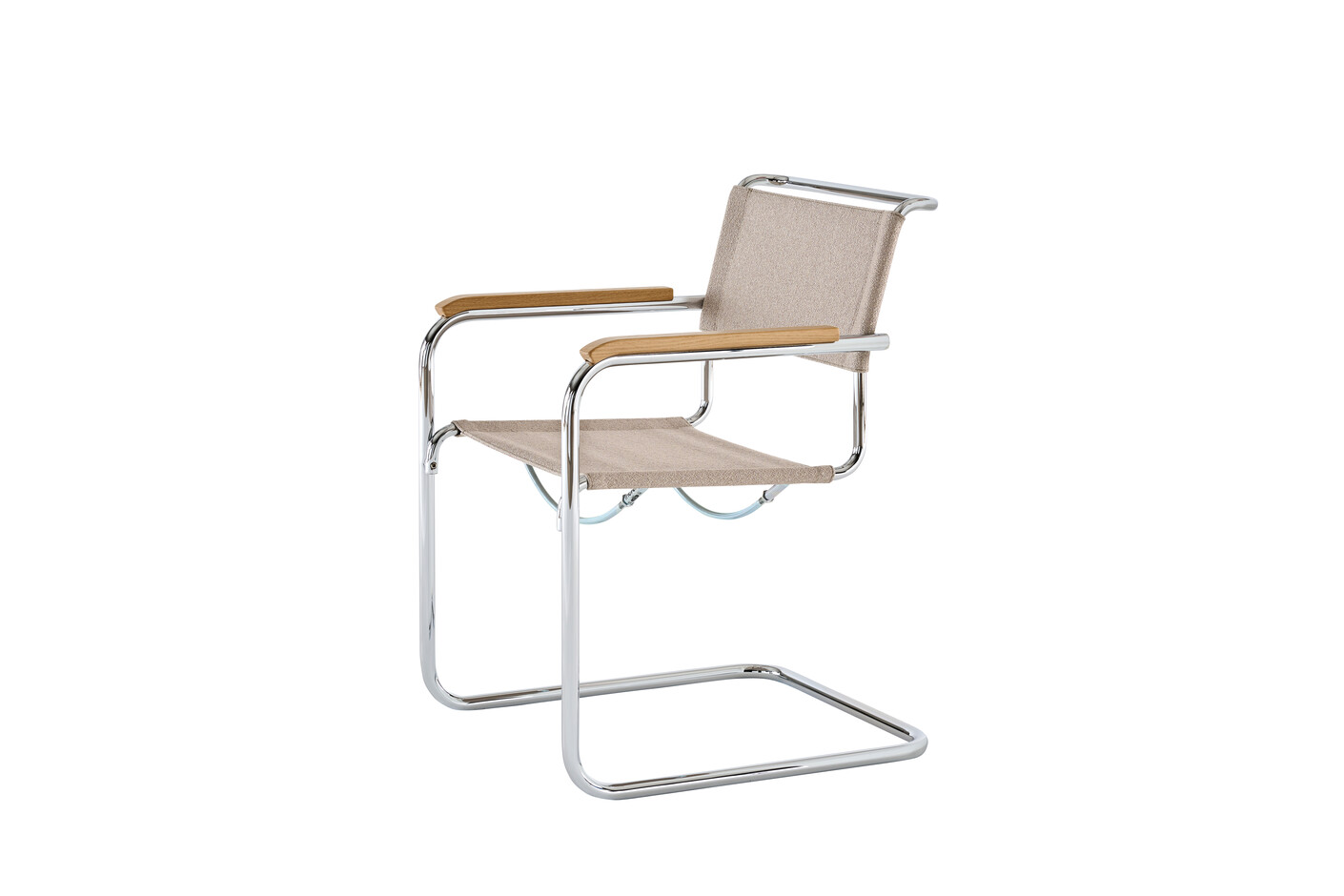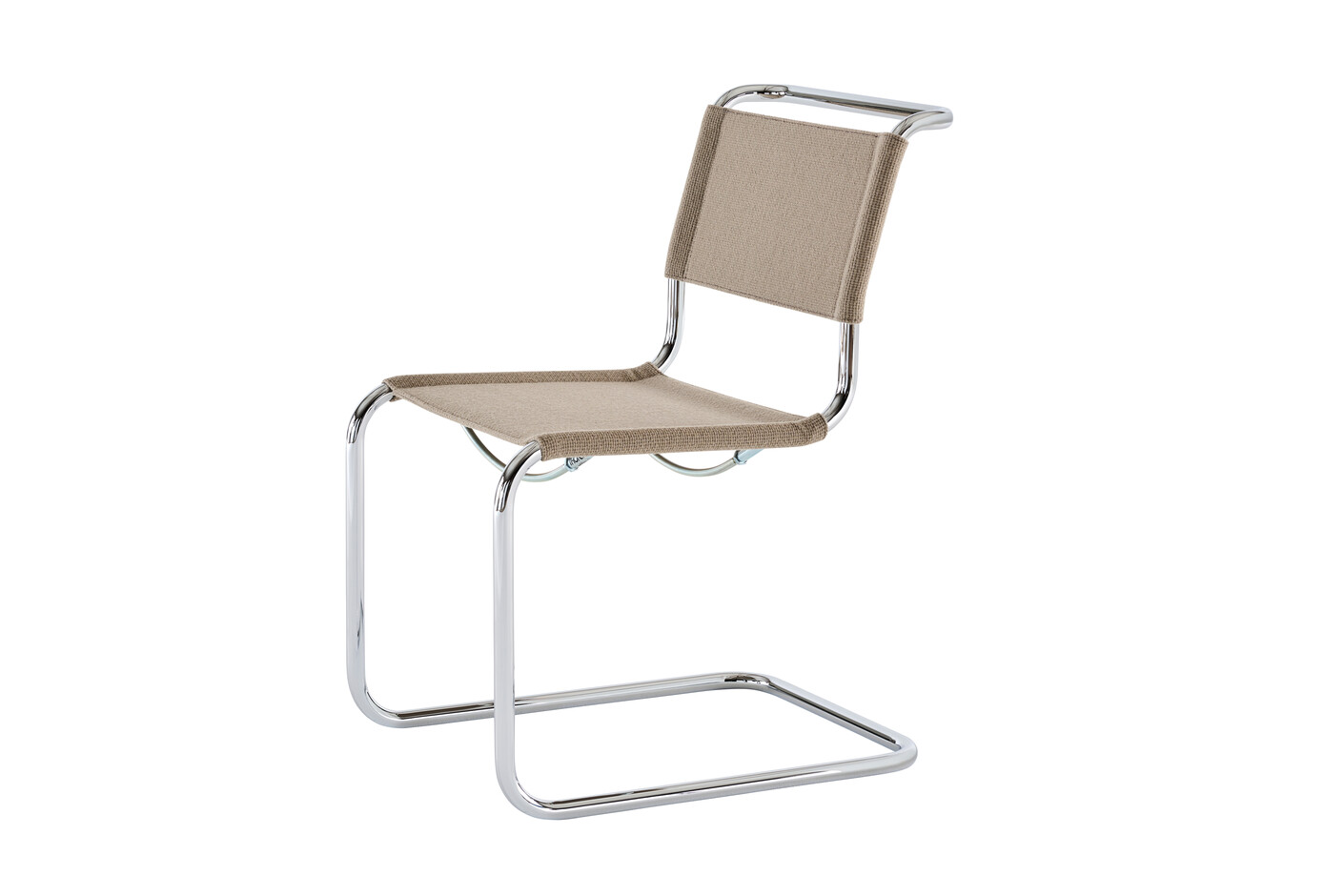Bang up to date
“At the beginning of my career it was always important to me to see a project through from beginning to end. If I had a good idea, I wanted to realize it quickly and without making compromises.” Designer Steffen Kehrle thinks for a moment, before adding: “That was the right approach back then. Today I take more time. I have learnt when I have to say stop and start afresh.” Kehrle is standing in his Munich studio among two dozen prototypes of the “DNS” chair. There are rough cardboard models and 3D prints that look as though they are ready for series production. “DNS” stands for Die Neue Sammlung. The design museum initiated the project and is a driving force behind it. “Die Neue Sammlung asked me at some point if I could design a chair for them. And that really was the complete brief.” It did not take long before Kehrle came up with the idea of designing a chair for use in the exhibition spaces. “Informal and space-saving – for visitors, supervisors and for use during lectures,” he says, outlining this initial concept. The museum was instantly taken with the idea. The designer conceived a small item of furniture with a narrow seat and a backrest that is only hinted at – half chair, half stool.
However, as he was making the first models the project took an unexpected turn: Die Neue Sammlung has the world’s largest collection of Thonet chairs, which was to be presented in a new light to mark the company’s 200th anniversary in 2019. Steffen Kehrle was asked if he could imagine taking on this task too. He could. And to top it all, all the participants liked the idea to connect both projects. The Thonet experts initially caused some disillusionment among Kehrle and his team: “Thonet confirmed to us what we actually already knew. That our original small chair-cum-stool was attractive, but uncomfortable.” So, it was time to press “reset.” And what approach could have been more fitting than addressing the history of Thonet? “For some time we tried to get to grips with the topic of the tubular-steel chair,” says Kehrle, “but the final result wasn’t entirely convincing. At some point I started doubting whether I really wanted to continue tinkering with a technology that was almost 100 years old.” He thought about the question “What would Mies van der Rohe, Breuer or Stam have done?” and came up with the answer: “They would have looked for new paths with new technologies!” And thus the direction was clear: no new tubular-steel chair, but a design that tests the boundaries of what is technologically feasible. “My best day on this project was when we decided together with those in charge at Die Neue Sammlung and Thonet to develop the ‘DNS’ chair as a technology platform of sorts.” Kehrle’s idea: a 3D-printed Monobloc chair where the material takes on different properties in different parts – for instance, soft and pliable on the seat or rigid and durable on the frame. These kinds of technologies are currently still bleeding edge and a far cry from series production. But that is the point. After all, the design is not intended to be a finished preproduction model, but to offer an outlook on the future of furniture production.
Chairs for an amphitheater
The "DNS" chair will be on view together with its precursors in the new permanent Thonet exhibition, which will open in mid-May. They await visitors at the end of a tour that leads them through one of the architecturally most unusual spaces of Die Neue Sammlung at Pinakothek der Moderne. Architect Stefan Braunfels built an amphitheater of sorts in the building, which was inaugurated in 2002. The original plans envisaged numerous chairs from all eras being displayed on its steps. Yet this form of presentation was never realized. Instead, the Thonet collection was displayed here in a way that placed great importance on the company’s history, but little on spatial impact. With the new concept, Steffen Kehrle and the curators Josef Straßer and Xenia Riemann-Tyroller are returning to the planned, yet never realized scenography. The three cleared the space of all subsequent exhibition fittings. In future, the Thonet chairs will be positioned on the steps of the amphitheater, framed by half-height aluminum screens. “The material itself is almost colorless,” Steffen Kehrle explains, “but it reflects the colors of the chairs into the space. This enables us to animate it without changing the non-color concept of the exhibition architecture.” The lighting concept is also new. “The space used to be gloomy. Only the exhibits were illuminated by spotlights. Yet for the new presentation we wanted bright, even lighting. Now the space looks entirely different thanks to new lens technology in the existing downlights.” The new tour through the exhibition leads visitors down the semicircle step by step, past the chronologically arranged exhibits. It starts at the oldest surviving Thonet chair, made in 1819, the year the company was founded, and ends with Kehrle’s “DNS” chair.
The new presentation of the collection is due to open on May 17, 2019. The catalog has just been sent to print. Mirko Borsche, currently one of the most influential German graphic designers, conceived the layout. He designed a new font especially for the catalog and the exhibition poster whose form obviously derives from the characteristic curves of Thonet’s bentwood chairs – and yet in no way appears old fashioned. Indeed, nothing about this exhibition gives the impression it is intended to provide a sentimental retrospective on the occasion of a company anniversary. Rather, the exhibition organizers are interested in the immediate present. And that is precisely where they pick up the thread of the last 200 years of Thonet’s company history.
Thonet & Design
Die Neue Sammlung - The Design Museum
Türkenstraße 15
80333 München
from May 17, 2019
Opening hours:
10 a.m. to 6 p.m. (Tue., Wed., Fri.-Sun.)
10 a.m. to 8 p.m. (Thu.)
Monday closed
